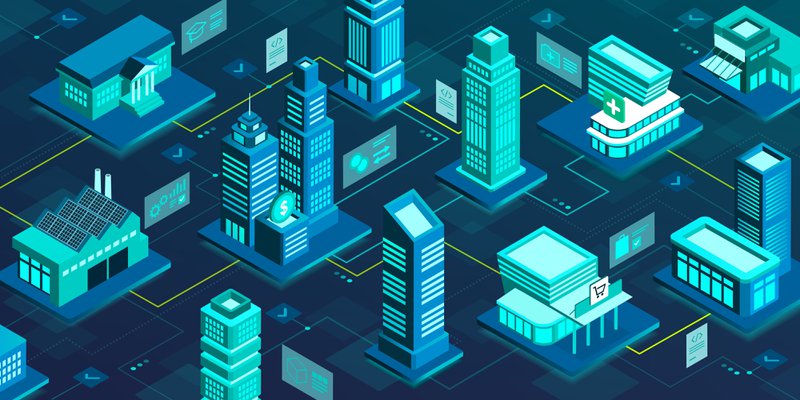Data centers power the productivity and entertainment applications we have come to rely on every day. Given this fact, it is no exaggeration to say the entire economy (and life as we know it) depends on the uptime and performance of data centers. However, data centers differ widely in their designs and cooling needs.
The cooling capacity of a data center controls both how much processing power it can host and how much value it can produce for you. Better cooling systems yield longer uptimes and faster computing. Overheating poses one of the most serious threats to the stability and functionality of a data center. Any server failure from overheating has negative consequences for your customers and your revenue streams.
Each type of data center deserves its own cooling system designed to meet its unique needs. The main categories of data centers include private enterprise data centers, public cloud and hyperscale data centers, colocation data centers, and edge data centers. There are also special-purpose data centers that handle high-performance computing (HPC) and cryptocurrency.
Each type of data center has its own specific requirements for cooling, servers, and networking equipment. Yet, they all would benefit from liquid immersion cooling. GRC makes liquid immersion cooling systems that can be deployed for all types of data centers and provide superior cooling performance for less money.
Enterprise/Hyperscale/Cloud Data Centers

Many of the biggest and most economically important server installations now work in enterprise, hyperscale, and cloud data centers. An enterprise data center works for a single large organization and can be either on-premise or off-premise. Cloud data centers host servers for multiple clients, while hyperscale centers accommodate the largest hosts like Google, IBM, Amazon, Facebook, and Microsoft. Hyperscale facilities range from around ten thousand to ten million square feet each.
Enterprise, hyperscale, and cloud data centers pack in dense computational resources that emit more heat than traditional air cooling is equipped to handle. They need capable cooling systems to keep up with all the heat they produce. That’s where GRC’s liquid immersion systems come in.
Enterprise and cloud data centers need more processing power than ever, as businesses are now running hundreds of applications each. To get a feel for what liquid immersion can do, imagine operating 168 dual-processor servers that use a mere 5% of the power used for air cooling. Liquid immersion cooling enables you to run far more IT hardware for the same electrical cost, offering more optimal performance without negatively impacting the environment.
Immersion cooling not only frees up energy use, but it also frees you to build out as you see fit. You can modify as necessary without committing too much capital. Moreover, it takes just weeks to install.
Colocation Data Centers
A colocation or “colo” data center strikes a compromise between an enterprise data center and a cloud data center. Instead of an organization hosting its own servers or renting a cloud host’s servers, the organization rents space for its own servers and related equipment.
This offers the benefits of owning your own servers as well as being able to host them at a fast and secure site. Plus, it’s more affordable than a private enterprise data center and enables the use of multiple geographical sites at once.
You can either rent an entire colo data center or just rent rack space within a facility. The colo company is responsible for the facilities, including cooling, electricity, bandwidth, and the building itself. This frees up the customer to focus on the IT equipment.
Colocation data centers have somewhat similar cooling needs to cloud data centers. Both of these categories host servers for multiple clients in a well-provisioned site. Colo companies can gradually add immersion cooling capacity to keep pace with customers renting server space.
Edge Data Centers

Edge data centers feed instant responses to the Internet of Things (IoT) devices and other applications. Edge data centers differ considerably from cloud data centers. The edge refers to locations close to where people live and work, rather than distant centralized facilities. This restricts edge data centers to smaller areas with fewer (if any) technicians on-site. Edge servers then act as fast relays for the larger centralized data centers.
The spread-out locations and lack of infrastructure make edge data centers tougher to cool. For example, real estate and electricity may cost much more for an edge site in a busy urban area. Other edge sites face harsh environmental conditions, further complicating efforts to keep systems cool.
Fortunately, there are purpose-built immersion cooling systems for the edge such as the GRC ICEtank data-center-in-a-shipping-container. You can install or move this virtually anywhere, yet it contains impressive computing power comparable to what you can exert in a centralized cloud data center.
Liquid immersion cooling for an edge site does away with the need for complex and expensive (and failure-prone) air cooling systems. You don’t need airflow for the ICEtank and the servers are protected by the liquid against the effects of air, water, and dust.
High-Performance Computing Data Centers
While computing performance has increased dramatically over the years, the term “high-performance computing” (HPC) refers to the harnessing of computer power such as using supercomputers or computer clusters to solve the most complex computational problems in science, engineering, and technical business. Applications of HPC can include designing medicines or predicting oil and gas reservoirs.
As you might expect, cooling requirements for high-performance computing are extremely difficult to meet. HPC involves the use of supercomputers containing power-hungry processing units. These can pack fifteen times more heat into a space than standard cooling can ventilate. As a result, HPC has largely abandoned air cooling, setting a precedent that less intensive computing will follow as processor power continues to increase.
High-performance computing data centers require premium cooling even more than standard data centers. The solution can be found in GRC’s liquid immersion systems for HPC. They handle over 100 kilowatts per rack to accommodate the supercomputing that air just can’t manage.
The immersion units don’t need raised floors or the massive electrical infrastructure of air cooling, so you can now conduct high-performance computing without the restrictions. Liquid can dissipate 100% of the heat from HPC. Liquid immersion cooling is also silent and easy to maintain, so technicians find it a pleasure to use.
Cryptocurrency Mining Data Centers
The meteoric rise of cryptocurrencies like Bitcoin, has brought with it an equally accelerated rise in their processing needs. Mining farms have given way to custom data centers for cryptocurrency. Next year, we’ll see gigawatts of new crypto mining capacity in Texas alone funded by private and public institutions. A single immersion-cooled crypto-mining data center will have 46,000 computers.
Blockchain hashing for crypto and other purposes uses more electricity than some entire countries. In the process, crypto mining expels tons of heat. For crypto mining to be profitable, you have to control costs. Conventional air cooling can use up around as much electricity as the actual processors themselves. The massive processing loads of cryptocurrency result in unmanageable cooling costs.
The practical response to this energy-intensive activity is to use GRC’s liquid immersion cooling for blockchain. Whether in a data center utilizing the HashRaQ, or in a shipping container using the HashTank, immersion makes it feasible to mine crypto or do any other sizable blockchain computing.
Cryptocurrency is driving the wider adoption of liquid immersion cooling systems. We’re heading in the direction of all crypto-mining using immersion cooling. And eventually, the same will go for less intensive data center types.
Data Centers Are Still Air-Cooled…but Until When?
Industry trends are converging to force data center operators of all sorts to transition from conventional air cooling to more energy-efficient and sustainable methods. Increasing CPU power use, heat generation, cost of power, regulatory compliance, and green IT initiatives merge to push us to rethink data center cooling.
This is where immersion cooling comes in, as a new technology that is a thousand-fold more efficient than traditional air cooling. While most data centers are now air-cooled, and people think of it as the default, the days of using air cooling are numbered. Liquid immersion is spreading through the market as a more affordable, sustainable, and effective cooling solution.
GRC’s Conversion-to-Immersion Program lets you upgrade any brand of server from air cooling to immersion cooling. Whatever combination of hardware you use, you can step into the future to deliver faster performance for less cost. Liquid-cooled servers also last longer and decrease emissions.
Liquid immersion cooling makes sense for countless use cases. If you have high energy costs or need high rack density, you already have a convincing case for immersion. Whatever the case may be, it all boils down to one simple truth: the future is liquid.
Find New Ways to Cool Down Your Data Center With GRC
GRC produces the industry’s go-to liquid immersion cooling systems. Whether you run an enterprise data center for your organization, a colocation, or a cloud or hyperscale data center to serve the public, liquid immersion cooling can transform your business and your bottom line.
It’s only a matter of time until the data center industry as a whole has switched from air cooling to liquid cooling. Facilities that transition sooner stand to earn more profits and lessen their environmental impact, leading to a more successful future for their business and the world as a whole.
When you’re ready to join the growing momentum and upgrade to liquid immersion cooling, contact the experts. Talk to GRC now!




